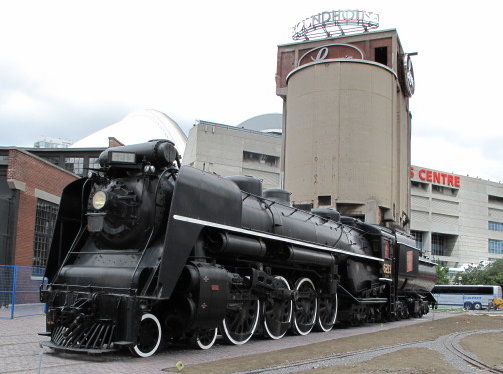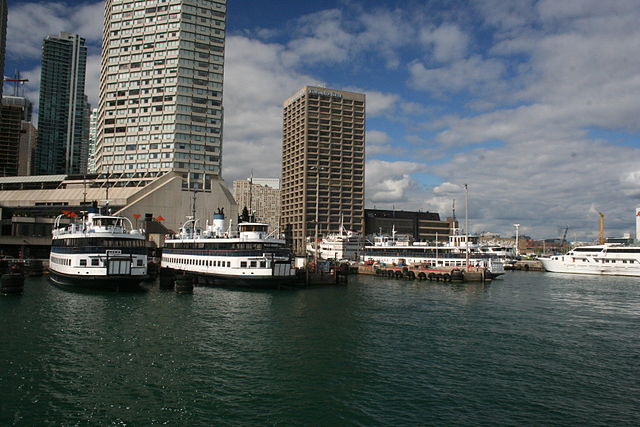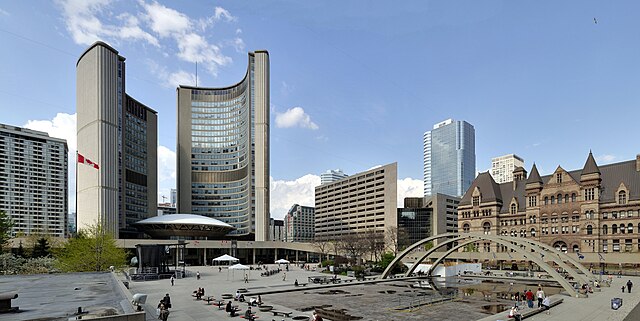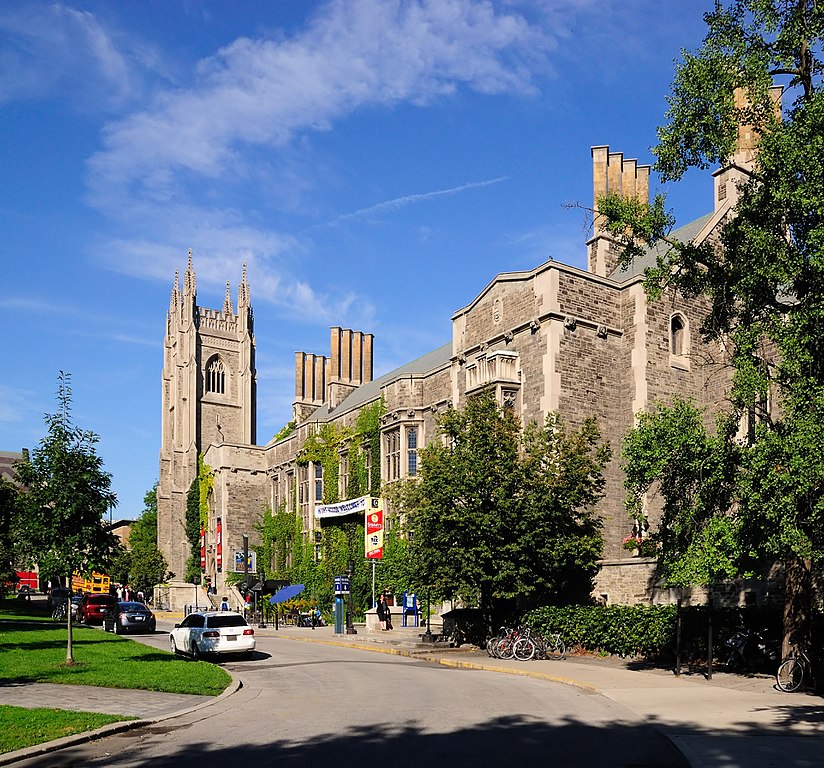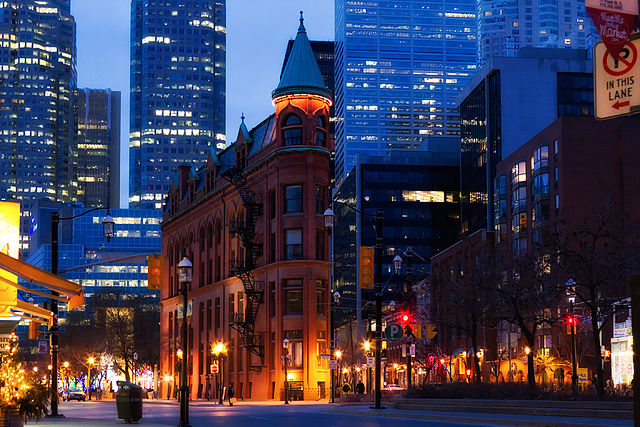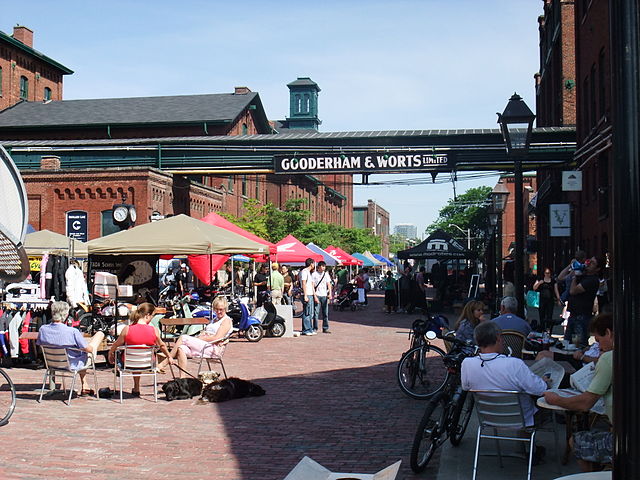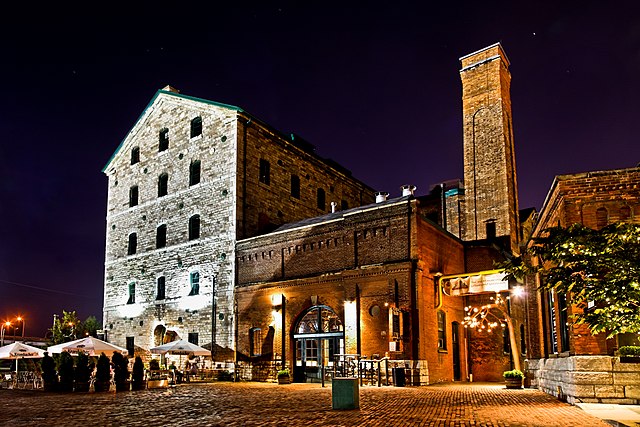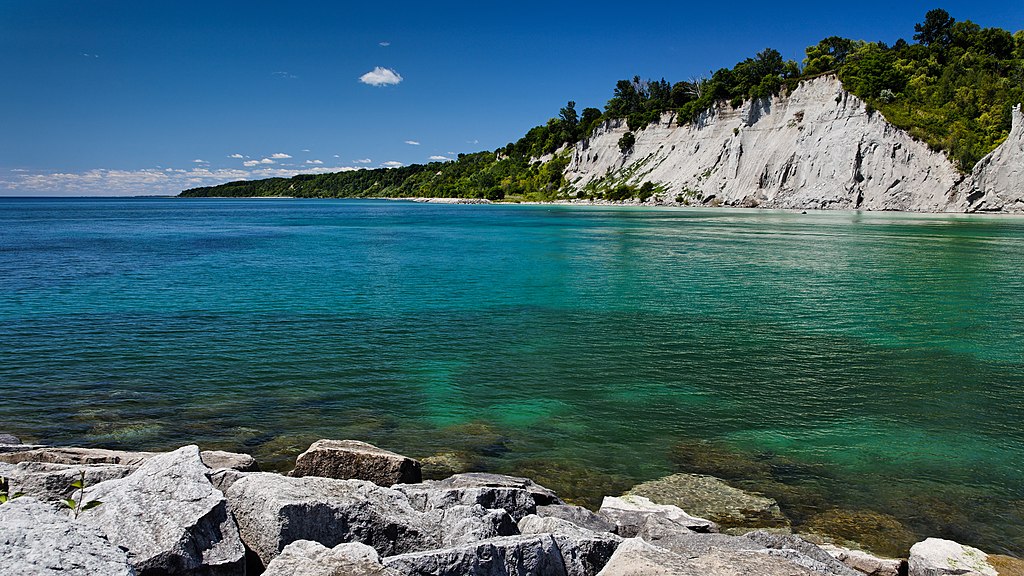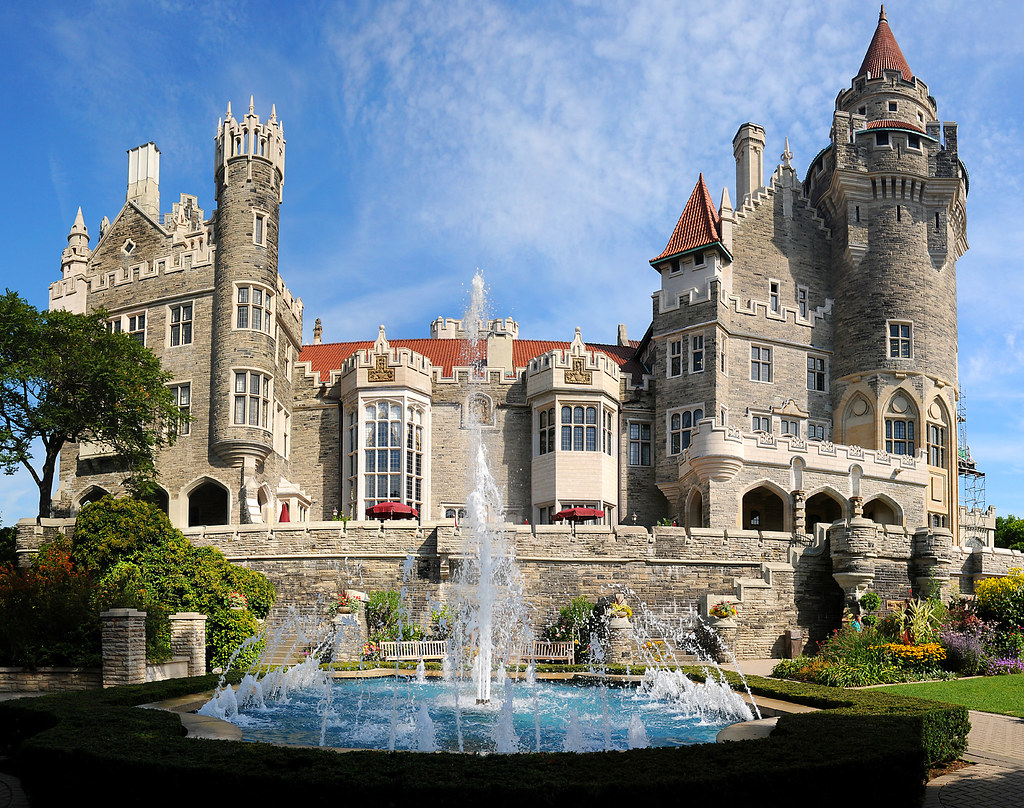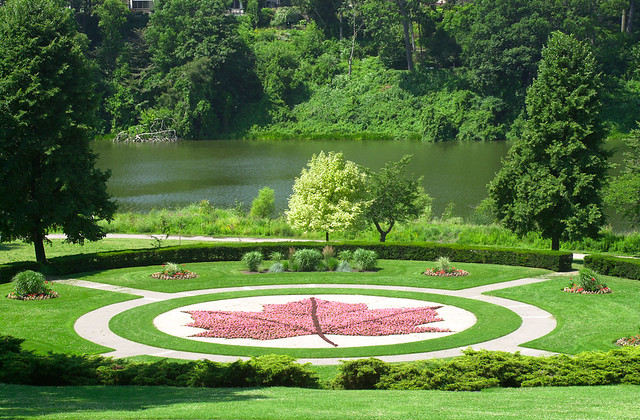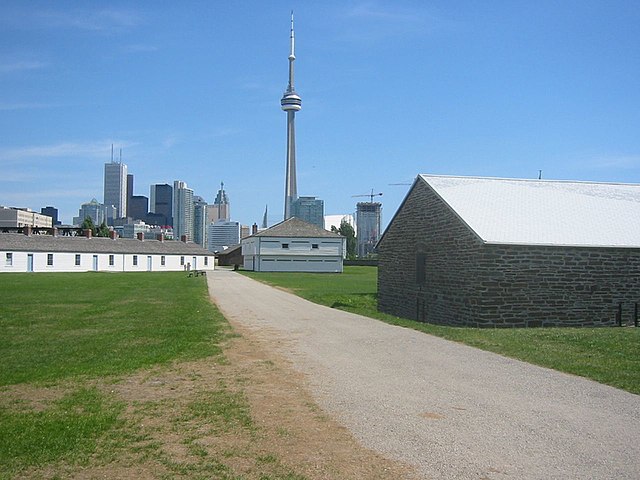Toronto, also known as T.O. or Queen City, is the largest city in Canada and widely recognized as one of the most cosmopolitan and multicultural cities in the world.
Toronto
A signature icon of Toronto's skyline and a symbol of Canada, the CN Tower was built in 1976, it held the world's tallest free-standing structure at 553m (1,815ft) for 34 years until the completion of Burj Khalifa and Canton Tower in 2010. Its name "CN" originally referred to Canadian National, the railway company that built the tower. Its observation levels offer a panoramic view of the City of Toronto and beyond. The CN Tower opened the EdgeWalk in 2011, an amusement in which thrill-seekers can walk on and around the roof of the main pod of the tower at 356 m (1,168.0 ft), which is directly above the 360 Restaurant. It is currently the world's highest full-circle, hands-free walk. Booking for the EdgeWalk is required.
Roundhouse Park is a 17 acre (6.9 ha) park in Downtown Toronto in the former Railway Lands. It features the John Street Roundhouse, a preserved locomotive roundhouse which is home to the Toronto Railway Museum, and Steam Whistle Brewing. The park is also home to a collection of trains, the former Canadian Pacific Railway Don Station, and the Roundhouse Park Miniature Railway.
Harbourfront is a neighbourhood on the northern shore of Lake Ontario in the downtown core of Toronto. It has a network of parks, open spaces and trails that allow residents and visitors to access the public realm. Parks and public spaces like HTO Park, the Martin Goodman Trail, the Yo-Yo Ma Music Garden, and the Waterfront WaveDecks at the foots of Spadina Avenue, Rees Street and Lower Simcoe combine to beautify the harbourfront and bring people to the water's edge.
The Toronto Island Ferry connects the Toronto Islands in Lake Ontario to the mainland of Toronto, Canada. The main ferry service carries passengers and vehicles from Jack Layton Ferry Terminal at the foot of Bay Street to several docks on the islands. The largest island is Centre Island, which is home to the main amenities of the Toronto Island Park.
The Toronto Islands are located just offshore from the city centre, and provide shelter for Toronto Harbour. The islands are home to parkland, the Billy Bishop Toronto City Airport, several yacht clubs, Centreville Amusement Park, and Hanlan's Beach (clothing optional). There is no admission fee to the islands, except the ferry ticket. The islands offer scenic views of the Toronto skyline.
Yonge-Dundas Square, or Dundas Square, is a public square located at the southeast corner of the intersection of Yonge Street and Dundas Street East in Downtown Toronto. Since its completion in 2002, the square has hosted many public events, performances and art displays. It is a landmark of the city and one of the busiest intersection in the country. Across the street from the square, it is the city's famous shopping mall Eaton Centre.
Toronto
Named after the ex-mayor, Nathan Phillips Square is an urban plaza in downtown Toronto. It forms the forecourt to Toronto City Hall, or New City Hall, at the intersection of Queen Street West and Bay Street. The Old City Hall is located on the east side of Bay Street. During the winter months, the reflecting pool at Nathan Phillips Square is converted into an ice rink for skating. It is Canada's largest city square.
Queen's Park is an urban park in Downtown Toronto. Opened in 1860 by Edward, Prince of Wales, it was named in honour of Queen Victoria. The park is the site of the Ontario Legislative Building, which houses the Legislative Assembly of Ontario, and the phrase "Queen's Park" is regularly used as a metonym for the Government of Ontario. Tours of the Legislative Assembly of Ontario can be booked, free of charge.
The University of Toronto, also known as U of T, is a public research university in Toronto, situated on the grounds that surround Queen's Park. It was founded by royal charter in 1827 as King's College, the first institution of higher learning in the colony of Upper Canada.
The Royal Ontario Museum (ROM) is a museum of art, world culture and natural history. It is one of the largest museums in North America, the largest in Canada. The museum is situated north of Queen's Park, in the University of Toronto district, with its main entrance on Bloor Street West.
Yorkville was founded in 1830, today it is an affluent neighbourhood in Toronto. Within the Yorkville district is one of Canada's most exclusive shopping districts, anchored by the Mink Mile along Bloor Street. North of Bloor, on Yorkville and Cumberland streets, between the main arteries, the character changes to smaller buildings containing art galleries, boutique shops, and restaurants.
Toronto
The red-brick Gooderham Building is a historic landmark of Toronto, Ontario, Canada located at 49 Wellington Street East. Completed in 1892, it was an early example of a prominent flatiron building.
St. Lawrence Market is a major public market in Toronto. It is located at Front St. East and Jarvis St in the Old Town district of the city. There are 3 buildings in the complex: 1) St. Lawrence Market North, on the north side of Front St, hosts weekly farmer's markets and antique markets (it is under re-development since 2015). 2) St. Lawrence Market South, dated back to 1845, on the south side of Front St, is open daily, hosting food stalls, restaurants and the St. Lawrence Market Gallery. 3) St. Lawrence Hall is an event and office building on King at Jarvis, built in 1850. St. Lawrence Market was named the world's best food market by National Geographic in April 2012.
The Distillery District is a commercial and residential district in Toronto. Located east of downtown, it contains numerous cafés, restaurants, and shops housed within heritage buildings of the former Gooderham and Worts Distillery. The 13 acres (5.3 ha) district comprises more than forty heritage buildings and ten streets, and is the largest collection of Victorian-era industrial architecture in North America. The district was designated a National Historic Site of Canada in 1988.
The Scarborough Bluffs, also known as The Bluffs, are an escarpment in the Scarborough district. Forming much of the eastern portion of Toronto's waterfront, it stands above the shoreline of Lake Ontario. At its highest point, the escarpment rises 90 metres (300 ft) above the coastline and spans a length of 15 kilometres (9.3 mi). It was first named in 1793. The Bluffs have been described as a "geological wonder" and a unique feature in North America.
Toronto
Casa Loma (Spanish for Hill House) is a Gothic Revival style house and gardens in midtown Toronto, that is now a museum and landmark. It was built from 1911 to 1914 as a residence for financier Sir Henry Mill Pellatt. Due to its unique architectural character in Toronto, Casa Loma has been a popular filming location for movies and television.
Opened in 1876, High Park is the largest park in Toronto. It spans 161 hectares (400 acres), and is a mixed recreational and natural park, with sporting facilities, cultural facilities, educational facilities, gardens, playgrounds and a zoo. A grove of Japanese cherry trees exists along a roadway from near Grenadier Cafe leading down to Grenadier Pond, with spectacular blooms in late April to early May. Over 2000 cherry trees in the park were donated by Japan.
Established in 1793, Fort York is a historic site of military fortifications and related buildings on the west side of downtown Toronto. The fort was built by the British Army and Canadian militia troops to defend the settlement and the new capital of the Upper Canada region from the threat of a military attack, principally from the newly independent United States. It was designated a National Historic Site of Canada in 1923.













